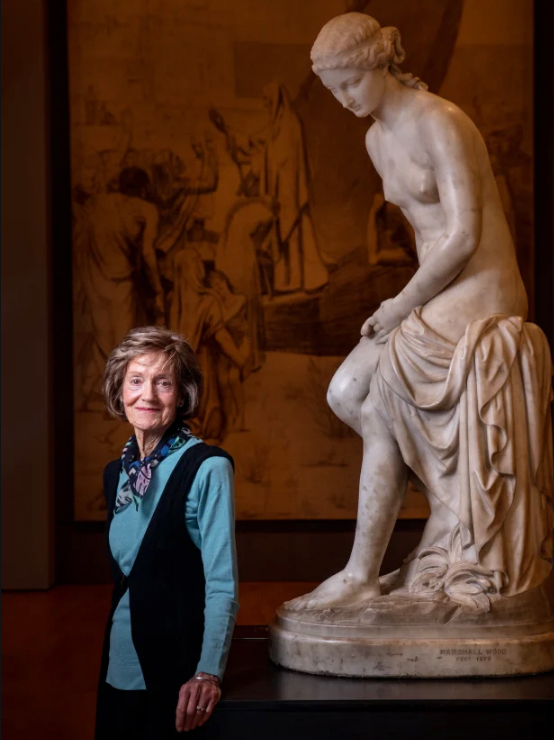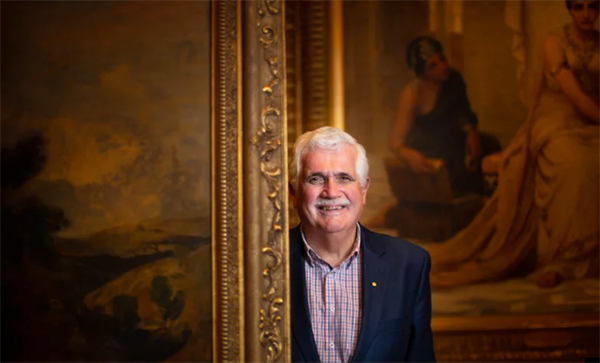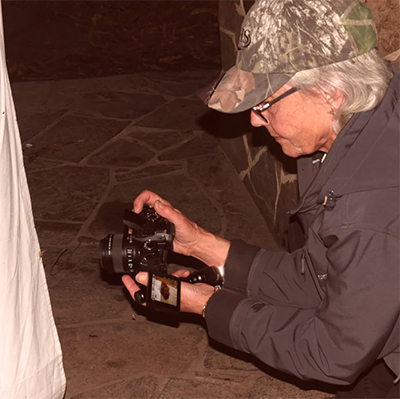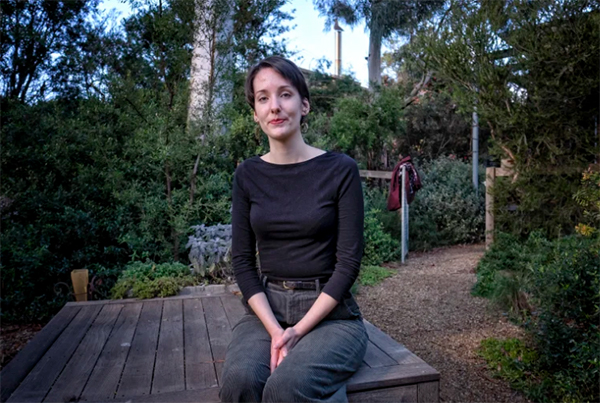Kylie Northover, A priceless dedication: volunteers return to galleries and museums, The Age, 26 June 2020

Until lockdown, Judy Davey’s only time off had been for a couple of months at a time to have her children; not bad for more than 50 years in the same job. Davey’s long-held position isn’t technically a job though – she’s a volunteer guide at the National Gallery of Victoria.
While art lovers have lamented the closures of our artistic institutions and museums, and their paid employees have been working from home, there’s been a unique sense of loss among the people who are neither punter nor employee – the hundreds of volunteers who play an integral role.
Not all volunteers will be there as the city’s cultural life is – at least partially – resurrected this weekend, but many are keen to return as soon as they can.
The NGV was the first Australian institution to establish a volunteer corp in 1968, when the gallery opened its St Kilda Road building. Then NGV director Eric Westbrook wanted to “humanise” the gallery experience, and a call went out for “hostesses” as they were then known.
In February 1969, Davey began her first volunteering shift at the NGV.
“Can you ‘hostess’ now?” Davey asks with a laugh. “There’d be shrieks everywhere! But that’s what we were – and we loved it.”

While many volunteers are retirees these days, when Davey started as a guide – with a small group of 10 or 12 initially – it was all women in their 20s, “when we had all just given up our jobs and settled down to married life and family,” says Davey. “Most of us had come from other professions and we thought that would be a new slant on life – back to study and out of the … domestic scene.”
Davey, who had trained as a psychologist, says initially there wasn’t a great deal of structured training – “We taught ourselves; we’d meet at someone’s house and talk about things” – but by the 1970s that had changed. The gallery’s volunteer training now must rank among the most rigorous – and the roles are tightly held and hotly sought-after.
Volunteers train for 18 months, attending lectures and talks twice a week, from curators, artists and other experts. There are assignments, essays and peer-reviewed presentations, and even after the initial training, volunteers must attend weekly lectures.
“It’s very professional now, and an absolute commitment,” says Davey. “In a major exhibition you’re fed a lot but you also have to organise your tour – there’s a lot of reading around a subject, because you never know what the public is going to say to you.”
As well as changes in the training and gallery’s visitors (”It was 60-year-old grey-haired women to start with”), Davey, who declines to reveal her age (“I started in my 20s, 50 years ago, so you can work that out. I’d like to keep it a secret while I’m still upright”) has seen the evolution of the gallery’s collections – and all the controversies.

She was working as a guide on the Sunday after it’s believed Picasso’s Weeping Woman – at the time the most expensive artwork the gallery had purchased – was stolen in 1986. The audacious thieves – who remain unidentified to this day – had left a note in the painting’s place, stating it had been “moved to the ACT”, referring to themselves as Australian Cultural Terrorists.
Davey was leading a group and pointed to where the Picasso usually hung. “I gestured over to say ‘there’s Picasso’s Weeping Woman’ and – oh, it’s not there! Then I looked and it said ACT,” she recounts. “I thought ‘oh, it’s been lent to the Canberra gallery’. And then Monday morning I heard about it! Whoever they were, they did a good job.”
She remembers when a brick was thrown through the Keith Haring mural on the waterwall in 1984, and when American photographer Andres Serrano’s controversial work Piss Christ was vandalised amid outcry from religious leaders.
“And I was there when Ivan Durrant put the dead cow on the forecourt. That was quite dramatic at the time,” she says. “There’s been a few things, hasn’t there?”
While she’s kept busy during lockdown, Davey, like her colleagues, is eager to return to the gallery.
Brian Martin, a guide of 10 years and the current president of the volunteer guide committee, consider his role at the NGV a job. A former lecturer in graphic design at Swinburne University, and one-time exhibition designer, Martin, 72, has also volunteered with Rotary, but says the NGV role is “one of the best volunteer gigs around”.

“We get exposed to world-class exhibitions and the guides just love the job,” he says. “We joke that the satisfaction level is very high, but the pay’s pretty bad! But it just doesn’t come into your thoughts, the money.”
Martin took up more art study when he retired, and has run an annual course for fellow guides on drawing since 2013. He’s used his time in lockdown to work on his own art, but is eager to get back, particularly to the study, to “get the wheels turning again”.
“It’s been challenging, but a lot of us have been in contact, and some of the guides have been contributing to the NGV social media,” he says. “But I’ve missed the interaction, and it’s a feeling of … loss, in a way.”
His favourite work in the gallery is Melbourne artist Janenne Eaton’s large-scale charcoal work on paper and canvas, called Canberra II, which hangs in the Ian Potter Centre.
“It’s just really emotive, I love it,” he says. “To get back in and walk around and see those wonderful paintings, is going to make a heck of a difference.”

Claire Zhang, a guide with the NGV since 2016, is also looking forward to being back in the building itself. “I miss the atmosphere, the genuine appreciation from the public and seeing the artworks – going back will be like seeing old friends again,” she says. “Just to stand in front of a painting, and say hello, you know?”
Zhang, who moved from China around 10 years ago, conducts tours in both English and Mandarin. She comes from a business background, and says her role as a volunteer opened up the world of art to her.
“Growing up in China we don’t have a lot of exposure to western art, so I feel really grateful for the intensive training program. I think NGV for me has been a window – it led me to the world of art,” she says. “I’ve loved the exposure to not just artworks in NGV, but artists, artworks in general … I know it’s a cliche, but I think it’s true that the more you learn, the more you become aware of how little you know.”
Volunteers also play an integral role at the Melbourne Museum, also reopening this week, although many, such as entomology volunteer Cathy Powers, won’t be returning just yet.
Powers, a retired nurse, spends at least a day a week helping catalogue the museum’s vast entomology collection. After spending several years documenting Victoria’s terrestrial orchids, Powers, 69, developed an interest in insects. “Then a friend introduced me to moths and I became extremely interested in them,” she says.

Living near Bacchus Marsh, near the Brisbane Ranges National Park, she has access to all sorts of wildlife, and started attracting moths with a light set-up. When she wanted to identify the species, a friend who volunteers at the museum suggested she might want to join her.
“And I loved it and now I’m stuck there forever! To do what I’m really interested in, and have access to this huge collection of lepidoptera has been absolutely wonderful – and provided me with the opportunity to contribute to the museum,” she says.
Before lockdown, Powers was at the museum one or two days a week, helping label and catalogue “drawers upon drawers” of specimens, many of them 100 years old or more.
“We’re trying to sort the collection and also make sure that all the identification and labelling, in particular the taxonomy, is current,” she says. Powers has also, through her research at home, contributed her own discoveries – so far she’s discovered two new species of moth.
While eager to get back to the museum, she says she’s been lucky during lockdown to be able to keep up her passion of collecting and photographing moths at her rural property.
“I’m looking forward to getting back though as just before this happened I was given a new project to work on,” she says. “I told my husband, ‘I’ve been given a promotion’, and he said, ‘you’re retired, how can you get a promotion?’ But it really is like a job. You don’t get paid but there are many other rewards … that aren’t necessarily dollars. It’s gratifying and satisfying.”
Across town at the Jewish Museum of Australia in St Kilda, volunteers, says retired teacher Annette Richter, are the “real heart” of the museum.
Richter, 61, has worked as an educational volunteer for three years, leading school groups through the museum’s galleries as well as the local synagogue. She has two other volunteer gigs, and loves the interaction with primary and high-school students.
“Especially in this climate, I try to talk about the differences between different faiths,” she says. “The most important thing is tolerance. Look at what’s happening now – that’s why the work we do is so important for the kids. It’s really nice for them to learn a little bit about the culture and see, we’ve got different customs, but so what, big deal.”
She’s missed that interaction during lockdown – “but I’ve kept busy relearning the piano after 35 years, and working on a mosaic” – and all the volunteers have kept in touch. “We’ve been running online programs as well, but it’s not the same – the place has such a lovely feel and I’ve very much missed it,” she says. “When you re-invent yourself after a full-time job, volunteering really becomes your work.”
Emily Whinfield is at the other end of the cycle; working as a volunteer at Heide Museum of Modern Art is a chance to gain work experience, while working in a space she loves.
At 21, Whinfield is a recent graduate in communication design, and has volunteered for the past year in visitor services and as a graphic designer.

“My parents have a bit of a design background so I was familiar with Heide’s story,” she says. “I love the history of communal living and taking on new ideas; you find that at its core it’s got those sustainable ideals and that background of supporting the community. Which is really lovely, compared to a corporate environment.”
Whinfield has missed her volunteer shifts – at least once a fortnight v and the connection with people outside her immediate circle.
“I’ve been missing talking to people from different demographics – people I wouldn’t normally talk to,” she says. And the physical space: “It’s nice to go out into that calm environment, it’s really peaceful,” Whinfield says of Heide’s 15 acres of grounds and gardens.
Even after 50 years, Judy Davey hasn’t grown tired of walking through the NGV’s doors. “It’s another world when you enter it,” she says. “If your canary has just died – or whatever – once you’re in, you’ve left your worldly cares behind.”

